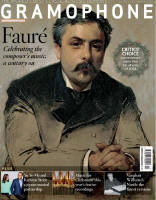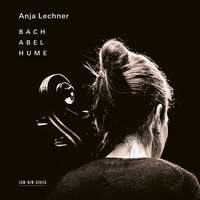Texte paru dans: / Appeared in:
|
|
|
|
|
|
Rosamunde Quartet founding cellist Anja Lechner is no stranger to solo recital recordings but this latest is, at least on the face of it, slightly different: solo cello as opposed to chamber partners, and Baroque rather than the sorts of contemporary, often cross-genre collaborations she’s made her calling card.
Conceptually, the idea here is that Lechner’s cello becomes the medium through which three composers, straddling three centuries, writing in entirely different contexts, are united around the story of the viola da gamba. Curtain-raising honours go to Scottish viola da gamba virtuoso and mercenary soldier Tobias Hume (c15791645), who served in the armies of Sweden and Russia while also creating music that contributed significantly to establishing the gamba as a solo instrument. Lechner uses his short, improvisatory-sounding A Question and An Answer not just as her programme-starters but as her programmewide rhetorical impulse. Also among her Hume offerings is Hark! Hark!, featuring probably the first-ever instance of a written col legno instruction (‘Drum this with the backe of your Bow’).
At the other end of the timeline, represented by his Arpeggio and Adagio in D minor, is German-born, London-based viola da gamba virtuoso Carl Friedrich Abel (1723-87), whose virtuosity on the instrument contributed to its brief revival just before it was finally, definitively usurped by the cello. Sitting at the programme’s heart are the first two Solo Cello Suites of JS Bach, their language still slightly informed by that of the solo viola da gamba repertoire, and interpreted by Lechner under the inspiration of that older solo instrument’s tonal language. Further blending of the centuries comes through her using a Baroque bow with her modern cello.
If that all sounds like quite a cornucopia of colours, textures and moods, the overall impression is slightly more single-mood and from the same mellow stable as Lechner’s modern-repertoire recordings – think gently contemplative, softly probing readings, tenderly shaped and embellished. Although I say ‘impression’ because there is pep in her mix: the uplift in energy towards the end of Hume’s A Question; the neat spring and bite of her faster Bach dances; even the boldness of realising Abel’s D minor Arpeggio in a rippling, dreamlike, sul ponticello-coloured flow, which feels like the missing link between the Baroque and modern minimalist arpeggiated piano music, and worlds away from, say, Susanne Heinrich’s version (Hyperion, 1/08).
If you’re secretly after ‘smooth baroque’ but too embarrassed to click on that playlist, this album is your top-drawer, face-saving solution. If you’re interested in a world in which the viola da gamba and cello repertoire smoothly, atmospherically blend, you’ll find plenty to enjoy here too. |
|




